Top Repotting Tips for Flowering Plants
Did you know that repotting your flowering plants can significantly improve their health and longevity? According to a recent survey, nearly 60% of plant owners report a noticeable improvement in plant vitality after repotting.
Repotting is an essential practice that provides plants with fresh nutrients, more space for root growth, and better overall conditions for thriving. In this article, we will explore repotting tips for flowering plants to ensure they stay healthy and beautiful.
Whether you’re looking to buy plants online in Dubai or simply want to care for your existing collection, these tips will help you maintain vibrant and flourishing plants.
Best Repotting Tips for Flowering Plants
Repotting your Tulip Flower plant and Lily flower plant can rejuvenate their growth and enhance their bloom quality. The first step is to choose the right time for repotting. Ideally, report your flowering plants during their dormant period, which is typically in early spring or late fall. This timing minimizes stress on the plants and allows them to establish new roots in their fresh soil before the active growing season.
When repotting, gently remove the plant from its current pot, being careful not to damage the roots. For a Tulip Flower plant or Lily flower plant, it’s crucial to use a well-draining soil mix to prevent root rot and other moisture-related issues. Place the plant in a pot that is slightly larger than the previous one, ensuring there is enough space for root expansion.
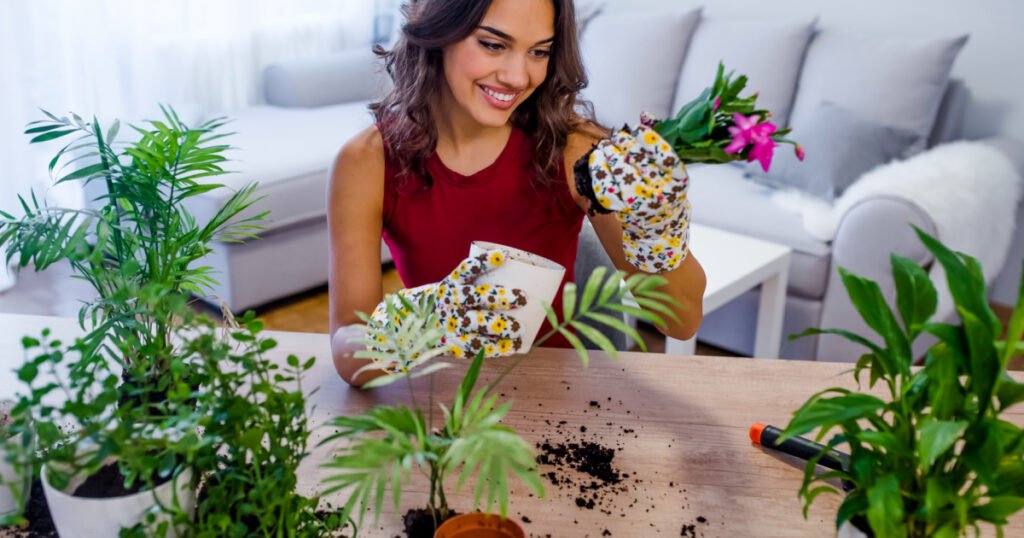
After positioning the plant, fill in the gaps with the new soil, lightly pressing down to eliminate air pockets. Water the plant thoroughly to settle the soil, and place it in a location with appropriate light and temperature conditions. Regularly check the plant for signs of stress or disease during the first few weeks after repotting, adjusting care as necessary to support its healthy growth.
Choosing the Right Pot Size
Selecting the appropriate pot size is crucial for the healthy growth of your flowering plants, such as the Annabella glazed ceramic pot or the Austin ceramic pot. A pot that is too small can restrict root growth, leading to stunted plants, while an overly large pot may retain excess moisture, causing root rot.
To strike the right balance, choose a pot that is 1-2 inches larger in diameter than the current one. This size provides ample room for root expansion without overwhelming the plant with excessive soil.

For instance, when repotting into an Annabella glazed ceramic pot or an Austin ceramic pot, ensure the new pot has drainage holes to prevent water from accumulating at the bottom.
This feature is vital for maintaining the right moisture levels and promoting healthy root development. After selecting the right pot size, fill it with a high-quality, well-draining soil mix.
This type of soil ensures that your plants receive the nutrients they need while preventing waterlogging. By choosing the correct pot size and proper soil, you’ll create an optimal environment for your flowering plants to thrive, enhancing their beauty and longevity.
Selecting the Best Soil Mix
Choosing the right soil mix is essential for the healthy growth of your flowering plants, such as the Citrus plant and Nolina plant. These plants require a soil mix that provides proper aeration, drainage, and nutrient availability.
For Citrus plants, a well-draining soil mix that retains some moisture but does not become waterlogged is ideal. A blend of potting soil, perlite, and peat moss works well, ensuring the roots have access to oxygen while preventing root rot.
Similarly, the Nolina plant, also known as the Ponytail Palm, thrives in a soil mix that mimics its natural, arid environment.
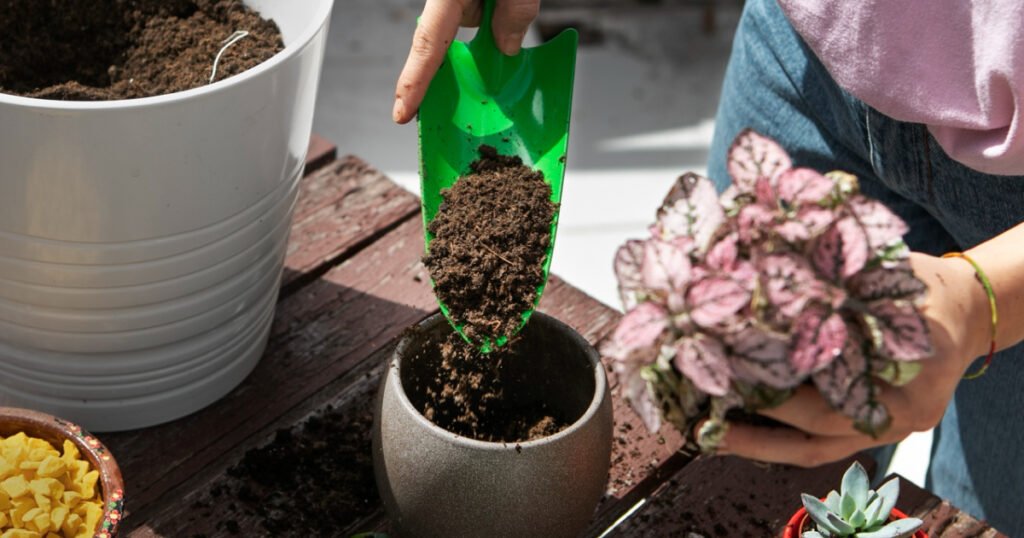
A mix that includes cactus or succulent soil, combined with sand and perlite, offers excellent drainage, essential for preventing overwatering and root diseases. Both the Citrus plant and Nolina plant benefit from a slightly acidic to neutral pH, so avoid using soil mixes that are too alkaline.
When selecting a soil mix, consider the specific needs of each plant. Ensure that the mix is light and loose, allowing for easy root penetration and growth.
By providing your Citrus plant and Nolina plant with the appropriate soil mix, you will support their overall health and encourage robust flowering, making your indoor garden a vibrant and thriving space.
Timing Your Repotting Efforts
Timing is crucial when it comes to repotting flowering plants like the Oxalis plant and Phalaenopsis orchids plants. Knowing when to report ensures that your plants experience minimal stress and continue to thrive.
For the Oxalis plant, which is known for its delicate and vibrant foliage, the best time to repot is during its dormant period, typically in late winter to early spring. During this time, the plant is not actively growing, making it less susceptible to transplant shock. Be gentle with the roots, and choose a slightly larger pot to accommodate growth.
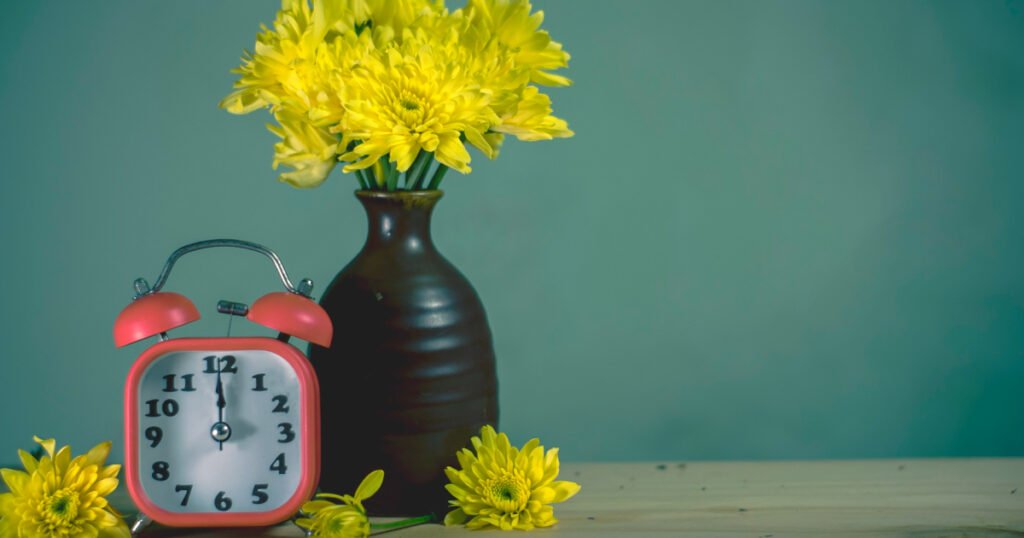
Phalaenopsis orchid plants, commonly known as moth orchids, have different reporting needs. These orchids should be repotted every one to two years, preferably after they have finished flowering and new growth begins to appear.
This period usually occurs in late spring to early summer. Repotting at this time allows the orchids to establish themselves in a fresh medium before the next blooming cycle. Use an orchid-specific potting mix that provides excellent drainage and aeration, crucial for healthy orchid roots.
By carefully timing your repotting efforts for the Oxalis plant and Phalaenopsis orchids plants, you can ensure that they continue to flourish. Proper timing helps reduce stress, encourages healthy root development, and supports robust flowering, contributing to the overall beauty and vitality of your indoor garden.
Preparing the Plant for Repotting
When preparing an Orange tulip plant for repotting, start by thoroughly watering it a day before the process. This ensures the roots are hydrated and less likely to break during repotting. Carefully remove the plant from its current pot, gently loosening the soil around the roots. Inspect the root system, trimming any dead or damaged roots with sterilized scissors.
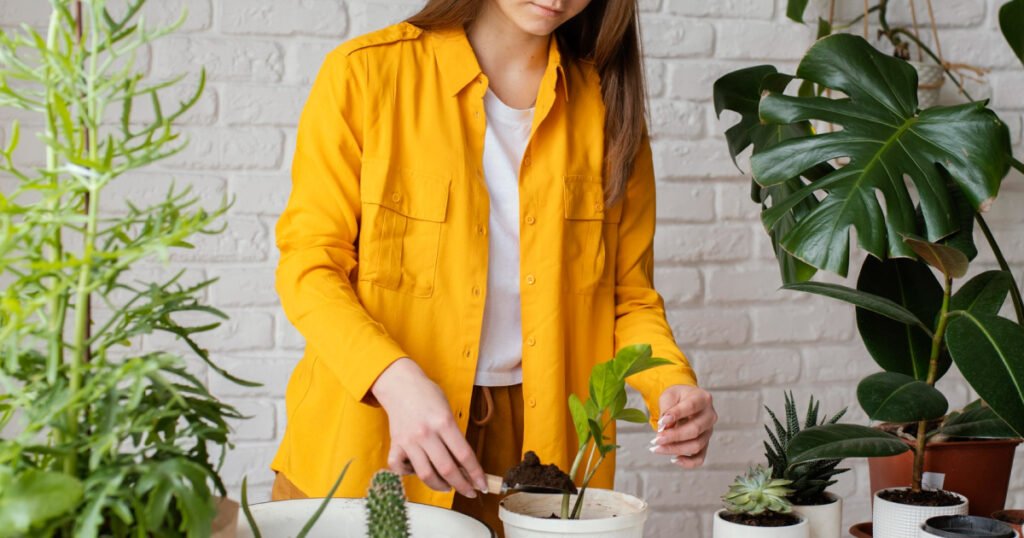
Next, clean the new pot to prevent the spread of any diseases. Choose a pot slightly larger than the current one to allow for growth. Add a layer of fresh potting soil at the bottom.
Position the Orange tulip plant in the center and fill it with more soil, pressing lightly to eliminate air pockets. Water the plant thoroughly after repotting to help it settle into its new environment. This careful preparation helps ensure a smooth transition and promotes healthy growth.
Proper Repotting Techniques
Repotting bonsai plants requires a meticulous approach to ensure their continued health and growth. Begin by choosing the right time for repotting, typically during early spring when the plant is coming out of dormancy.
Carefully remove the bonsai from its pot, taking care not to damage the delicate root system. Use a root hook or chopstick to gently untangle the roots, and trim any excessively long or damaged roots with sterilized scissors.
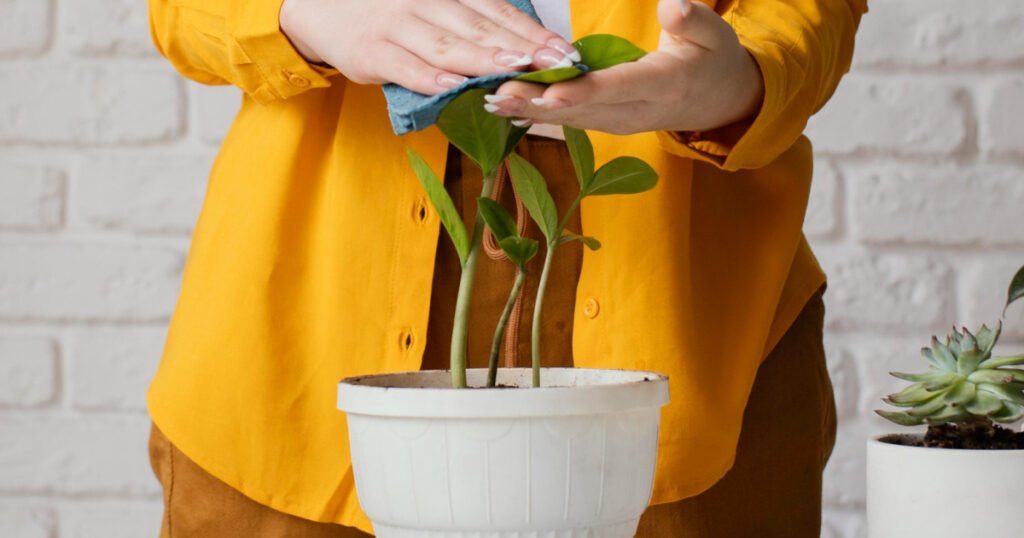
Next, prepare a suitable bonsai pot that complements the plant’s aesthetic while providing adequate drainage. Add a layer of coarse substrate at the bottom to enhance drainage, followed by a layer of fine bonsai soil.
Position the bonsai plant centrally in the pot, spreading the roots evenly over the soil layer. Gradually add more soil around the roots, ensuring there are no air pockets. Press the soil firmly but gently to secure the plant.
After repotting, water the bonsai thoroughly to settle the soil and eliminate any remaining air pockets. This careful and methodical approach to repotting will help maintain the health and beauty of your bonsai plants.
Common Mistakes to Avoid When Repotting
When repotting an olive tree, avoiding common mistakes is crucial to ensure its healthy transition to a new pot. One frequent error is choosing the wrong pot size. An excessively large pot can lead to waterlogging, while a too-small pot restricts root growth.
Opt for a pot that provides just enough room for the roots to expand slightly, ensuring proper drainage and preventing root rot. Using a pot with drainage holes is essential to avoid water accumulation, which can be detrimental to the olive tree’s roots.
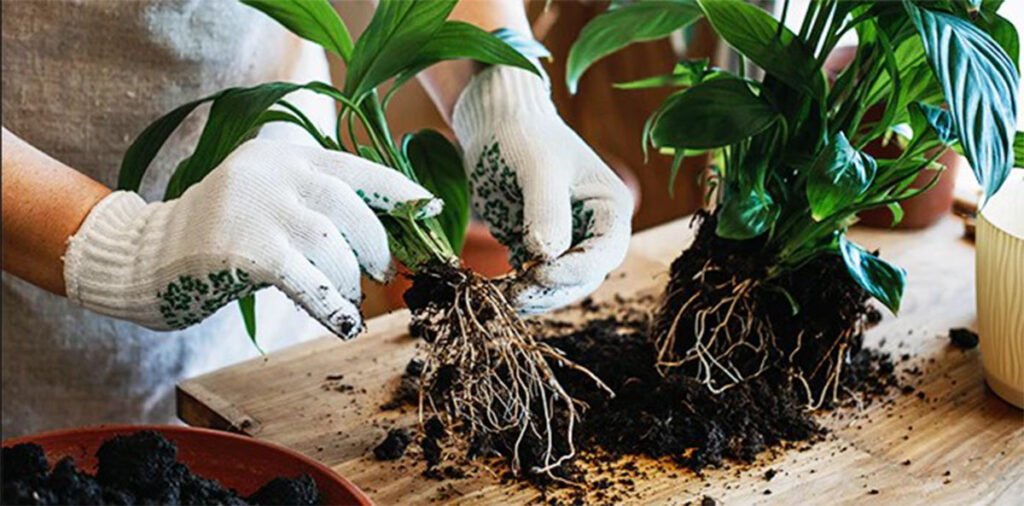
Another mistake to avoid is neglecting to prune the roots. When repotting an olive tree, gently trim the roots to encourage new growth and remove any damaged or diseased roots.
This process helps the tree establish itself more effectively in the new pot. Additionally, using the wrong soil mix can hinder the olive tree’s growth. Olive trees prefer well-draining soil; a mix of regular potting soil, sand, and perlite works well.
Ensuring the soil is not too compact allows for better aeration and water flow. By avoiding these common mistakes, you can provide your olive tree with the optimal conditions for healthy growth and longevity.
Final Thought
Repotting flowering plants is a rewarding process that ensures their continued growth and vibrancy. By following essential tips such as choosing the right pot size, selecting the best soil mix, and preparing your plant adequately, you can foster a healthy environment for your plants to thrive.
Avoiding common mistakes, such as overwatering or using unsuitable soil, is key to successful repotting. Remember, the care and attention you invest in this process will yield beautiful blooms and a flourishing garden.
For those looking to enhance their plant displays, don’t forget to buy vases online in Dubai for stylish and functional options that complement your repotted flowering plants. Whether you’re nurturing a tulip flower plant or a lily flower plant, having the right vases and pots can make a significant difference in both the health and aesthetics of your indoor garden. Happy repotting!
FAQs
When is the best time to repot flowering plants?
Spring is generally the best time, as it allows plants to recover and grow during the active season.
How do I know if my plant needs repotting?
Signs include roots growing out of the drainage holes, soil drying out quickly, or the plant becoming top-heavy.
What size pot should I use for repotting?
Choose a pot that’s 1-2 inches larger in diameter than the current one to give roots room to grow.
What type of soil mix is best for flowering plants?
Use a high-quality potting mix with good drainage, appropriate for your specific plant type.
How do I prepare my plant for repotting?
Water the plant thoroughly a day before repotting to reduce stress and make it easier to remove from the pot.
Should I prune the roots when repotting?
Lightly trim any dead or excessively long roots, but avoid heavy pruning to prevent shock.
Can I reuse old soil when repotting?
It’s best to use fresh soil to provide new nutrients and prevent potential disease transfer.
How deep should I plant the flowering plant in the new pot?
Plant it at the same depth it was in the old pot, ensuring the root ball is covered with soil.
How often should I water the plant after repotting?
Water thoroughly after repotting, then adjust based on the plant’s needs and the new soil’s moisture retention.
What should I do if my plant shows signs of stress after repotting?
Keep it in a stable environment with appropriate light and water. Avoid fertilizing until it stabilizes.
Do all flowering plants need to be repotted regularly?
No, some plants grow slowly and only need repotting every 2-3 years, while others may require annual repotting.
Where can I find stylish pots for my repotted plants?
You can buy vases online in Dubai from various online retailers offering a range of styles and sizes suitable for your plants.
